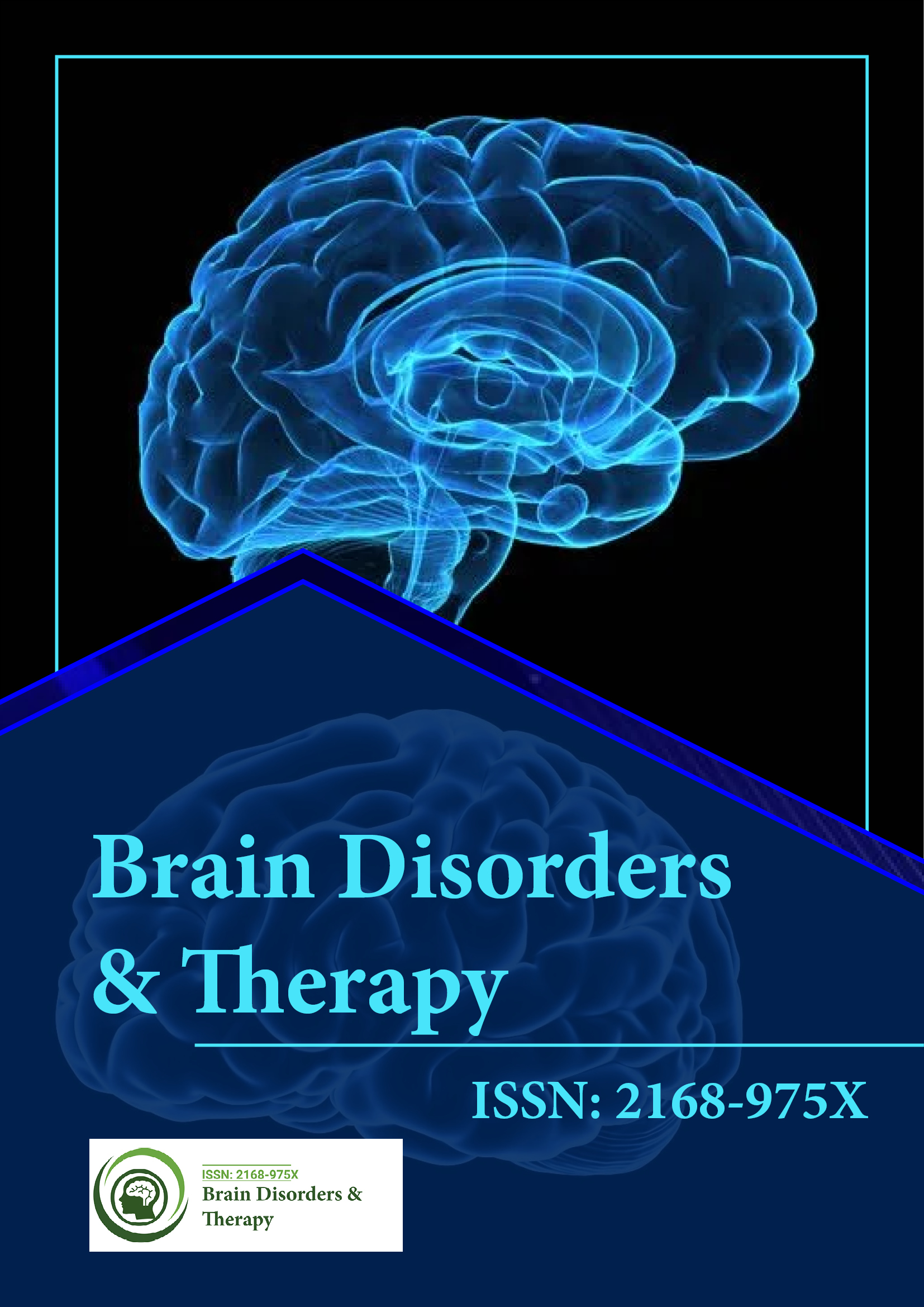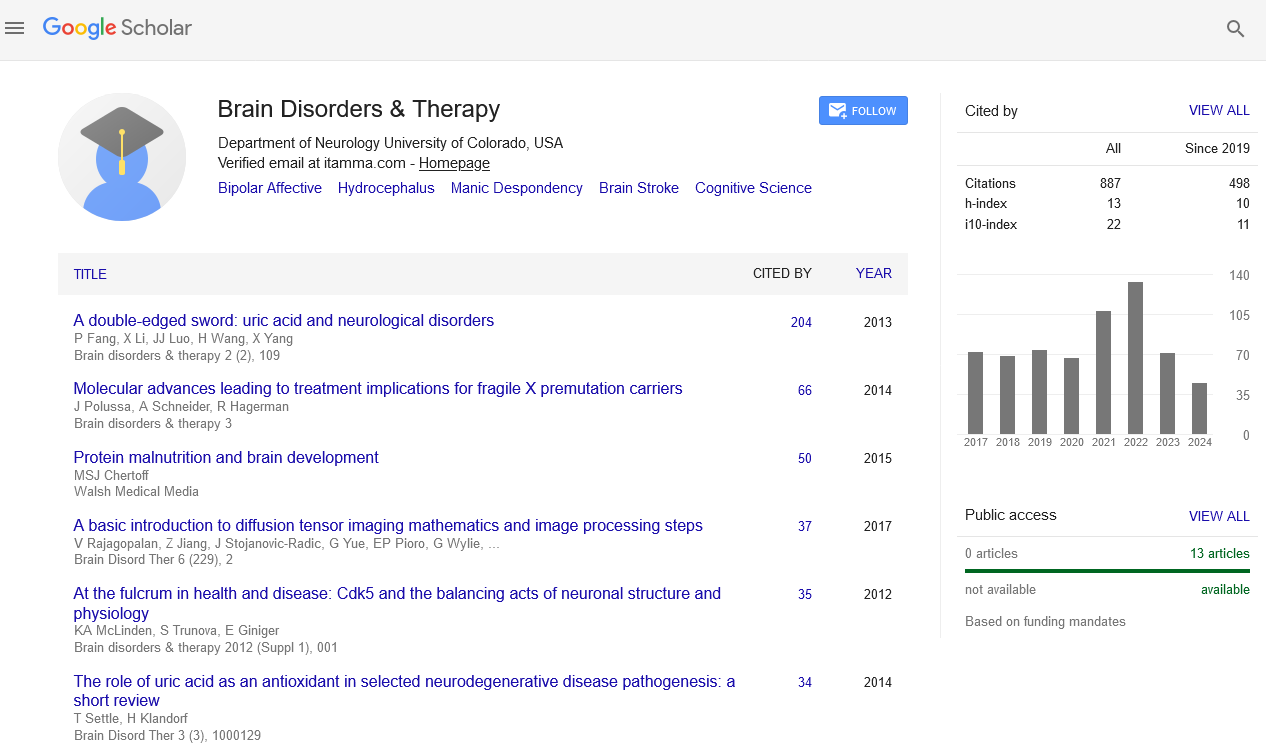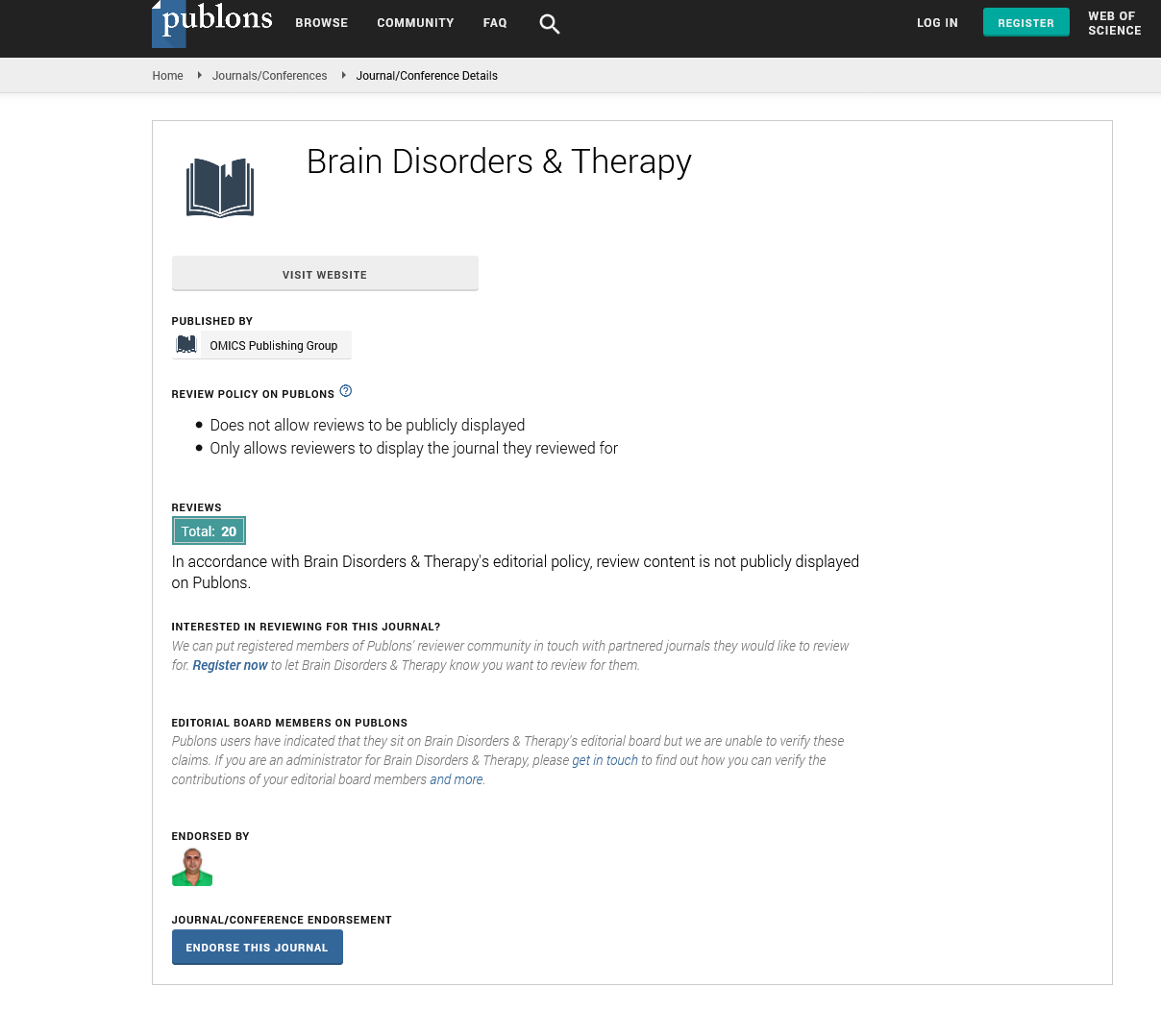PMC/PubMed Indexed Articles
Indexed In
- Open J Gate
- Genamics JournalSeek
- JournalTOCs
- RefSeek
- Hamdard University
- EBSCO A-Z
- OCLC- WorldCat
- Publons
- Geneva Foundation for Medical Education and Research
Useful Links
Share This Page
Journal Flyer

Open Access Journals
- Agri and Aquaculture
- Biochemistry
- Bioinformatics & Systems Biology
- Business & Management
- Chemistry
- Clinical Sciences
- Engineering
- Food & Nutrition
- General Science
- Genetics & Molecular Biology
- Immunology & Microbiology
- Medical Sciences
- Neuroscience & Psychology
- Nursing & Health Care
- Pharmaceutical Sciences
Targeting Iò1-adrenergic receptor as a novel therapeutic approach for treatment of Alzheimers disease
International Conference on Brain Disorders & Therapeutics
August 24-26, 2015 London, UK
Mehrdad Shamloo, Pooneh Memar, Ardestani and Bitna Yi
Stanford University, USA
Scientific Tracks Abstracts: Brain Disord Ther
Abstract:
Despite a huge impact on both individuals and public health, Alzheimers disease (AD) remains incurable without an effective, disease-modifying therapy. The lack of effective therapy in AD is attributable to the complex array of factors that are involved in its development and progression. 1-adrenergic receptor (1-ADR) is promising neuropharmacological target for the treatment of AD. Dysfunction of 1-ADR and its downstream signaling cascade are strongly implicated in cognitive symptoms of AD. Besides its involvement in cognitive symptoms, deficiency of the endogenous ligand for 1-ADR, noradrenaline, is highly correlated with several pathological features of AD including tissue load of amyloid plaques and neurofibrillary tangles. The involvement of 1-ADR in multiple key aspects of AD is a unique and therapeutically attractive feature that could enable a comprehensive strategy toward the treatment and management of the disease. Importantly, recent studies from our laboratory have shown that stimulation of 1-ADR is a promising therapeutic strategy for AD. In two independent preclinical models of AD, we have shown that stimulation of 1-ADR with the partial agonist, xamoterol, restores the cognitive deficits associated with the disease. Moreover, the 1-ADRagonist xamoterol increases the microglia phagocytic activity as evident by increase in CD68 and reduces soluble form of amyloid beta peptide (AB1-40). These data suggest that pharmacological modulation of 1-ADR could provide a novel therapeutic strategy to provide comprehensive therapeutic benefit for AD by simultaneously addressing cognitive symptoms and underlying neuropathology.
Biography :
Mehrdad Shamloo has completed his PhD from University of Lund, Sweden. Since the inception of his Doctoral studies in 1999, he has been working in the field of neuropharmacology and drug discovery and has led numerous industrial and NIH funded research projects in this field. Currently, he is Associate Professor of Neurosurgery and Director of Behavioral and Functional Neuroscience Laboratory at Stanford University School of Medicine. He directs multiple preclinical and pharmacological drug discovery programs with special focus on neuroprotective compounds, cognitive enhancers, and regenerative small molecules.
Email: mshamloo@stanford.edu


